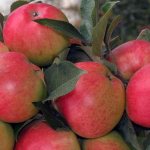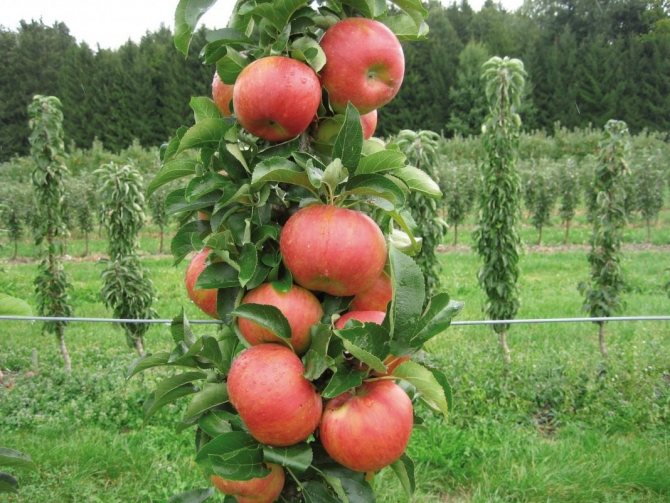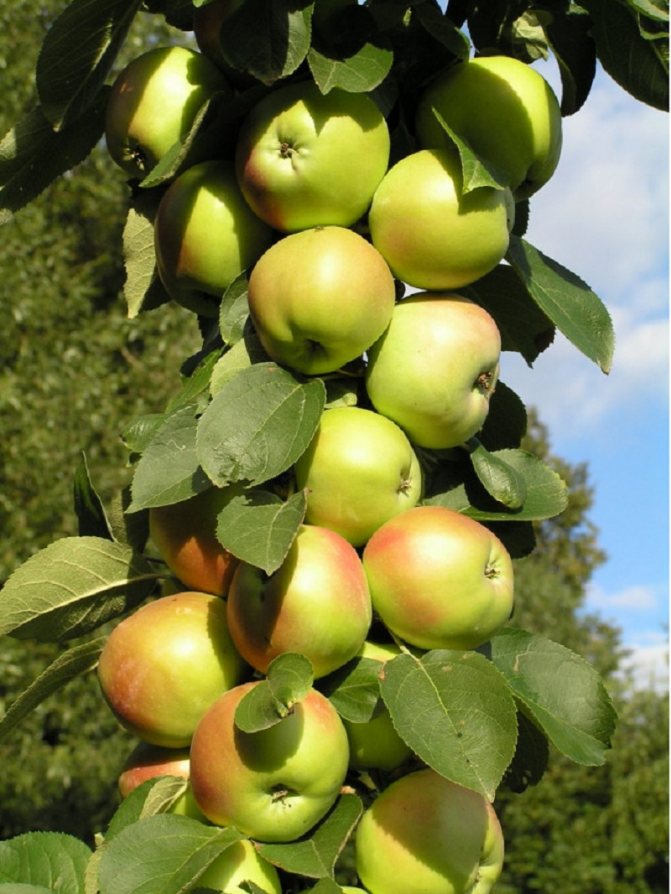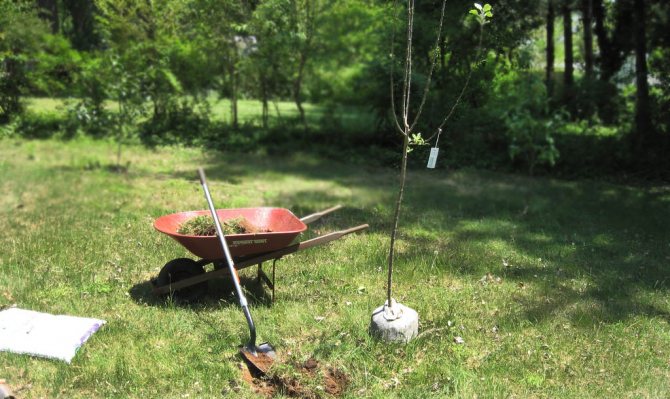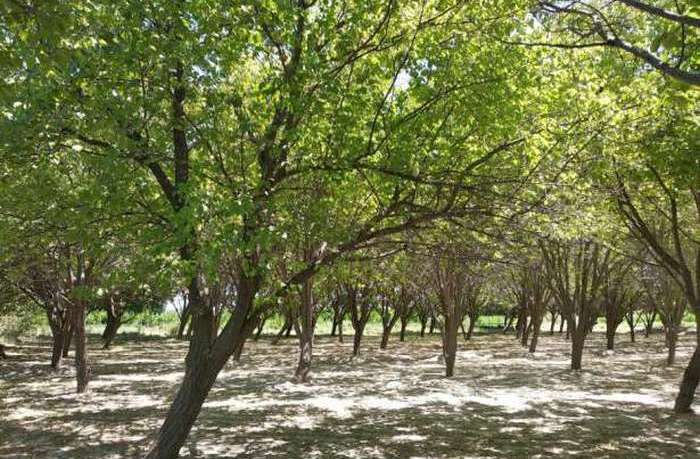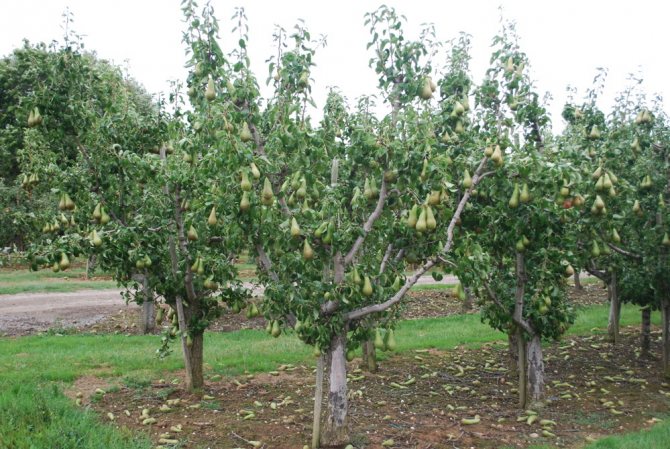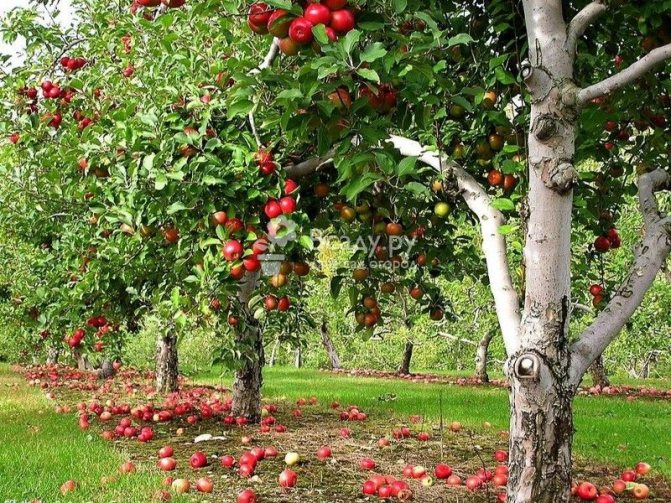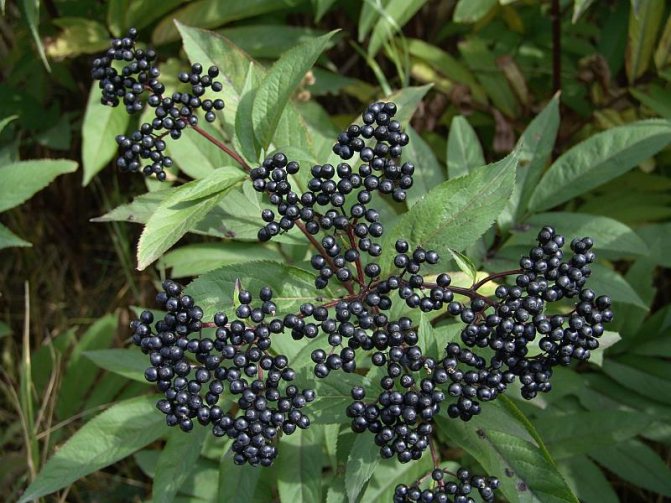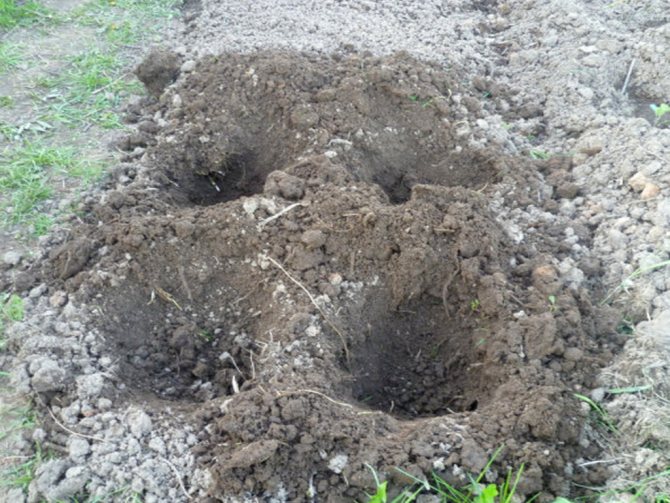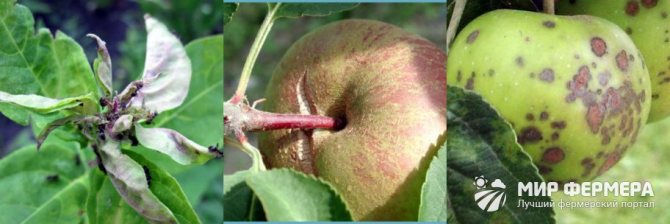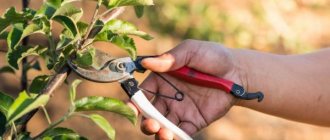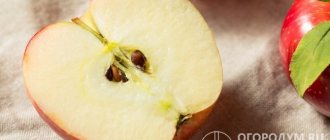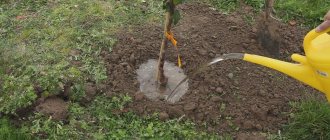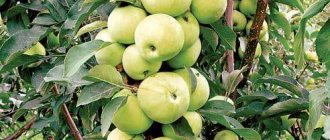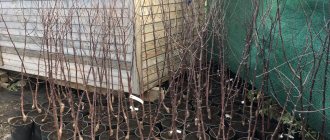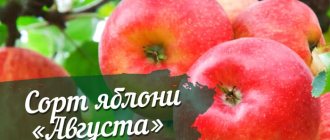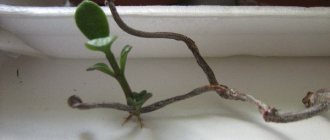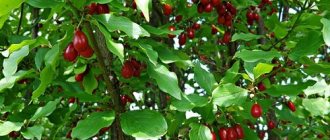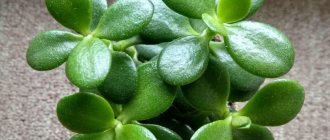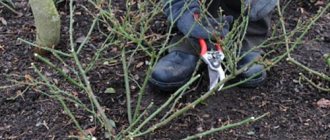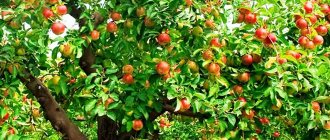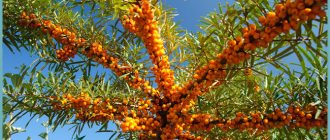In 1964, in British Columbia, Canada, an observant grower McIntosh Wijcik discovered an unusual twig on a Mequintosh apple tree. It grew strictly vertically and did not have branches, the fruit twigs were located close to the shoot. By the method of budding (grafting with a kidney), the first variety of columnar apple was obtained. She served as the beginning of a fundamentally new direction in culture.
The optimal planting of a columnar apple tree and its care are discussed in detail in our article. Due to the natural mutation of the apple tree, a new clone was formed, which practically does not have branching. All varieties of this variety are short trees with short internodes, dense foliage and fruits formed on short fruits. In this, columnar groups differ from traditional culture.
Period and rules for planting columnar apple trees
Rules for buying seedlings
The main role in planting apple orchards is played by planting material. Therefore, it is best to buy seedlings in a garden center or nursery. When buying on the market, and even more so on the highway, they can sell seedlings of summer varieties instead of autumn ones, replace one variety with another or even another crop (for example, a pear). In order not to be deceived and to purchase quality planting material, adhere to the following rules.
- Buy saplings with a tag, on which the variety and age of the seedling are recorded. Ask the seller for a written support, which indicates zoning, fruiting period, winter hardiness, resistance to diseases and pests, and other data.
- Seedlings are sold with open or closed root systems... If you buy seedlings directly from the nursery, it is better to buy with a closed root system. Such seedlings have a long shelf life before planting and a higher survival rate when planting permanently. Pay attention to the container. Whether the seedling grew in it or was transplanted before being sold. A seedling transplanted into a container before being sold can be easily removed from the container and may not take root.
- You can ask you to dig out a seedling of the selected variety and examine it carefully. It should not have mechanical damage to the bark and root. The latter should not have sagging on the central and lateral roots.
- Examine the vaccine... Given the fragility of the scion and rootstock, the graft may be damaged. Pay attention to the stock. For columnar apple trees, 2 types of rootstocks are used Paradizka Belorusskaya (PB-4) for the southern regions and Malysh Budakovsky for the middle zone of the Russian Federation. They differ from other types of rootstocks in the color of the bark: in PB-4, it is usually light green, almost light green with a yellowish tinge, in the second, it is violet-red. Other rootstocks will not provide the dwarfism of the columnar apple trees and other biological features of the columns.
- If you buy seedlings prepared for sale, check the root system... The roots should be elastic, without sagging and knobbiness. When scraping the bark from the root, the tissue should be white, alive. The bark of the seedling is not dry, the leaves are removed.
- It is better to buy annual seedlings... They have no lateral branches. The stem is usually 60-70 cm long with 5-6 buds.
- When transported to the place of disembarkation and prior to planting, the roots must remain moist.... They must be wrapped in damp burlap and plastic wrap. Before planting, dip in a bucket of rootstock or other root stimulant overnight.
Preparation of planting holes
It is better to prepare planting holes in the fall according to the scheme in the diary entries. The distance between the rows is not less than 1.0-1.2 m, in a row between trees (based on the average habitus of the culture) 0.4-0.6 m.The standard dimensions of the planting pit are 50x50x50, 60-70x60-70x50 cm, and the final adjusted to the size of the root system of the purchased seedling.
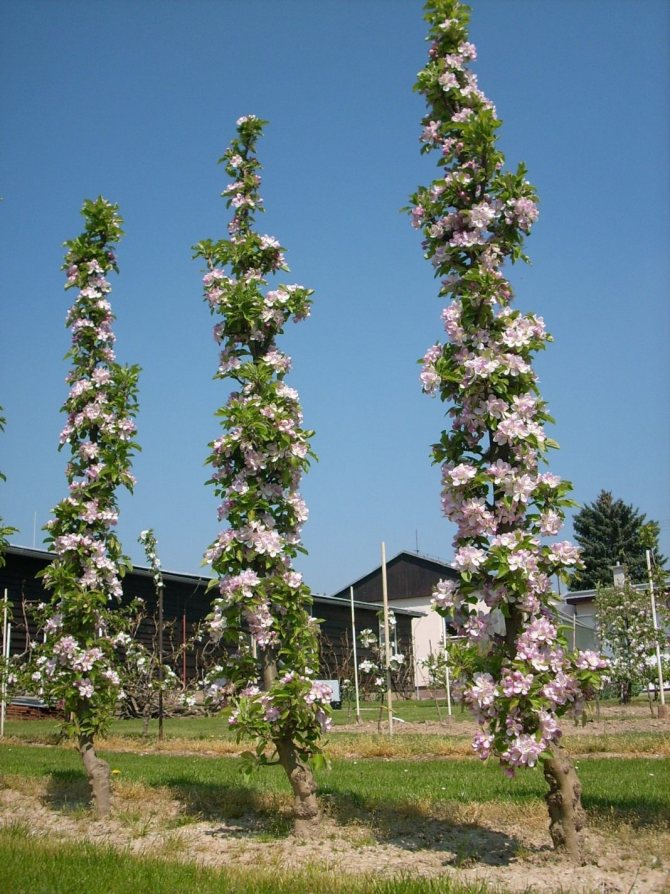
Columnar apple trees "Rondo". <>
Planting seedlings of a columnar apple tree
For planting, it is more practical to use annual seedlings. They take root faster, although they look very small and thin outwardly compared to biennials. Planting is best done in the spring before bud break. Drainage is carried out from coarse gravel and sand with a layer of at least 20-25 cm. The removed soil of the planting pit must be mixed with humus or mature compost and mineral phosphorus-potassium fats. For one tree, the mixture should contain 4-5 kg of organic matter and 80-90 g each of superphosphate and potassium sulfate. Add a glass of wood ash to the mixture and mix thoroughly.
We set the trunk of the seedling in the hole strictly vertically, straighten the roots, drive in the support. The root system should be freely located in the pit without bending the roots. We start filling from empty places, moving towards the seedling. Given the fragility of the vaccine, be careful and careful. After filling the hole to the middle, lightly tamp the soil and pour 0.5 buckets of water not cold from the street, but better at room temperature. After absorbing, check the position of the graft in relation to the edge of the planting hole. The graft should rise 2-3 cm above the ground. If the graft is dug in, under unfavorable conditions, roots from the scion may begin to develop. Finally, we fill the hole, compact the soil around the stem and tie the seedling to the support with a wide tape through the figure eight. We form a hole with sides no higher than 2-3 cm around the stem of the seedling and add water. For each seedling, water consumption is 1-2 buckets, depending on the age of the seedling. After planting, the soil is mulched. Mulch is removed for the winter.
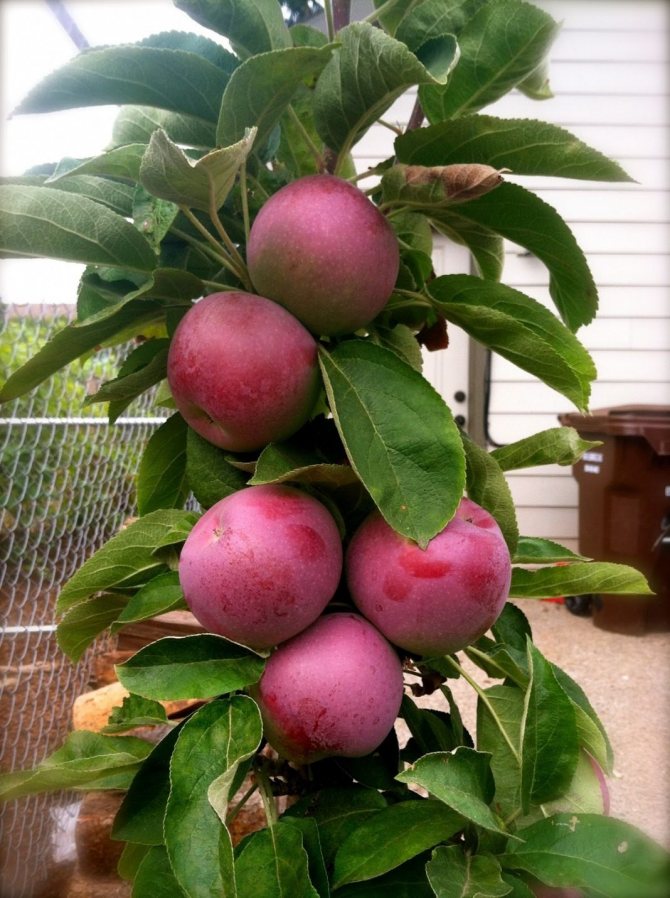

Columnar apple tree.
The best varieties
The successful planting of a columnar apple tree, as well as its further cultivation, largely depends on what kind of seedlings you plant in the front garden. Therefore, it is advisable to buy planting material in specialized nurseries.
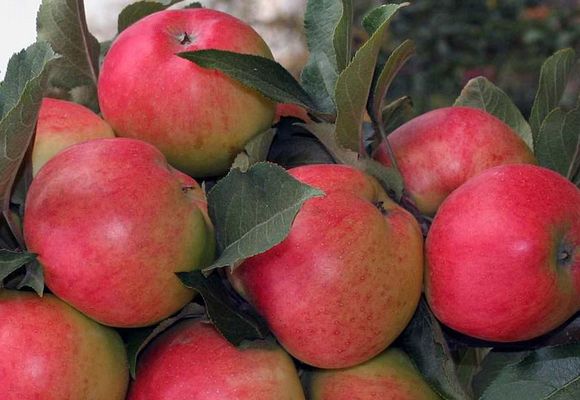

The fact is that if you acquire such a tree from your hands, there is a high probability of deception in the form of acquiring an ordinary variety grafted with a dwarf stock.
Well, as for such a question as the best varieties, the following types can be attributed to them:
- early varieties, Amber Necklace;
- Bolero apple trees;
- Gin;
- Titania.
Important! The most common variety of columnar apple trees, summer varieties, is Medoc. This culture is an honorary representative. It ripens at the end of summer and is highly resistant to frost, various defects and well resists parasite attacks.
In general, all the varieties described above have several common characteristics, namely:
- they are resistant to even the most severe frosts;
- the above varieties can be safely planted in Western Siberia;
- the fruits of these crops are large and have excellent taste.
It is also worth highlighting that these varieties annually delight with stable yields starting from the first year of planting. The main thing is to choose the right time for planting crops.
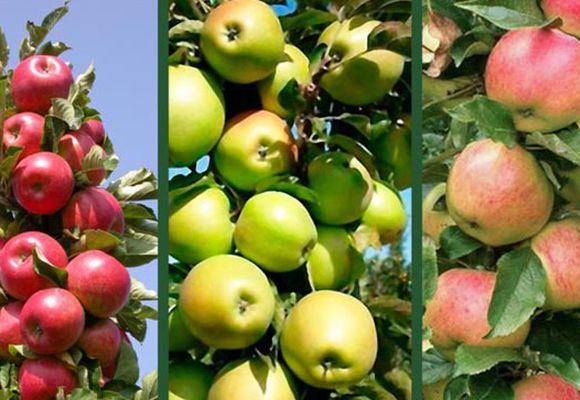

Feeding
Given the superficial location of the roots of columnar apple trees, it is better to apply top dressing in solid form on the soil surface with shallow embedding in the upper 1-3 cm layer and subsequent irrigation without jet pressure. During the growing season, three additional dressings are carried out.
On fertile soils, during the first top dressing, you can limit yourself to the introduction of nitroammofoska randomly at the beginning of leaf blooming at a dose of 50-60 g / tree. In the first year, top dressing is applied a month after planting the seedling. The second feeding is repeated after 3-4 weeks and the third after another 3-4 weeks. Instead of nitroammophoska, you can use a urea solution for feeding. Dissolve 2-3 tablespoons of fertilizer in 10 liters of water and apply at the root at the rate of 2-3 liters / tree, followed by watering and mulching. By the end of July, feeding is finished.
On depleted soils, the first top dressing is usually performed with humus. 2-3 buckets of mature humus or compost are introduced around the crown perimeter, watered and mulched. The second feeding is carried out during flowering with phosphorus-potassium fats, using 80 g of superphosphate and 50 g of sulphate or potassium chloride under 1 tree. They can be replaced with 250-300 g of urea or 0.5 buckets of slurry. The third top dressing is divided into 2 applications. In mid-July, urea or ammonium nitrate (30 g / tree in the form of a solution) is again introduced and after 2 weeks a phosphorus-potassium mixture (25 g of potassium and 40-50 g of superphosphate) or complex fertilizer according to the recommendations.
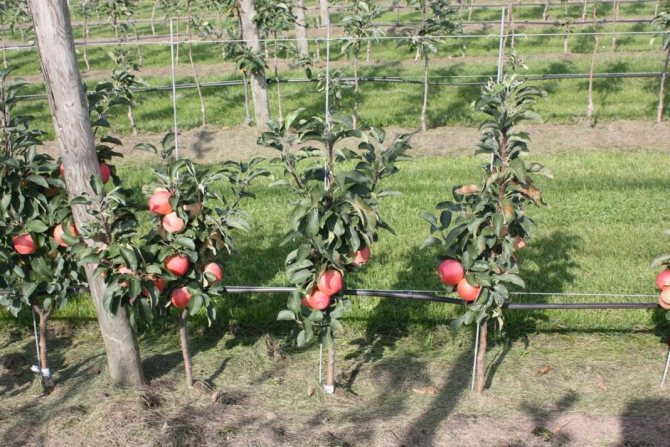

Columnar apple tree "Maloni-Sally". <>
Remember! After each fertilization, watering and mulching are required.
In addition to the recommended doses of fertilizers, 1-2 glasses of ash can be scattered around the crown perimeter. Having a small root system, apple trees respond very well to foliar feeding with solutions of trace elements, herbal decoctions, sodium humate, and biological products. By the end of July, all feeding is finished.
The above feeding schemes do not reflect all methods, but are recommendations for novice gardeners. In each case, the doses, timing and types of fertilizers will be different. But when feeding, you need to follow the rule:
- in spring, the soil is saturated with nitrogen fertilizers for better development of the leaf apparatus,
- during budding, they provide the elements responsible for the formation of the crop (phosphorus, potassium, trace elements),
- at the beginning of fruit setting - a composition that contributes to the growth of their mass and the acquisition of taste. During this period, it is necessary to add a little nitrogen fertilizer, the main fertilizer is phosphorus-potassium fertilizer, foliar fertilizing with microelements is used.
Watering columnar apple trees
Watering determines the juiciness of the pulp, so it is very important that the tree receives enough moisture throughout the growing season. For individual watering, form small bumpers (no more than 2 cm) to retain moisture. For each apple tree, use at least 1-2 buckets of water, after it has been absorbed, mulch the soil. The need for the next watering is determined by the depth of soil drying. With a dry layer 4-5 cm from the soil surface, regular watering is required. If there is an irrigation system, the garden is watered along the furrows between the rows. In dry weather, the culture responds positively to sprinkling, which is carried out in the morning or evening after sunset. On light soils, watering is carried out 2-3 times a week.
Load regulation of columnar apple trees
In order for a tree to grow up to be able to form sufficient yields, it needs time to prepare for systematic fruiting. Too early a heavy load (1-2 years) will weaken the tree. Therefore, experienced gardeners in the first year of flowering remove all ovaries, leaving 1-2 to see what the future fruits will be (in shape, color, taste, aroma). The next year, half of the bunches are removed, and in each remaining bunch, 1-2 ovaries are left when the diameter reaches 1-2 cm. In subsequent years, 2 thinning is carried out in the fruit link: during the flowering period and during the formation of ovaries. At the first thinning, the bouquets are left 2 times more than the amount of the future harvest.When the bouquets tie the fruits, thinning is carried out again, leaving no more than 2 ovaries. The fruits are large, and the tree itself does not suffer from exhaustion. With this formation, the harvest is tied annually. With too much load, apples turn out to be small, often tasteless, and fruiting is periodic (after a year).
Pruning columnar apple trees
A real columnar apple tree grows in one trunk, practically does not form side shoots and such a tree does not need pruning. But, sometimes a genetic malfunction occurs, and the apple tree intensively forms side branches. In this case, to maintain the columnar shape, trimming is used in one of 2 ways:
- remove all lateral branches for 2 buds, starting from the second year of the apple tree's life,
- form a crown in 2-3 trunks (candelabrum).
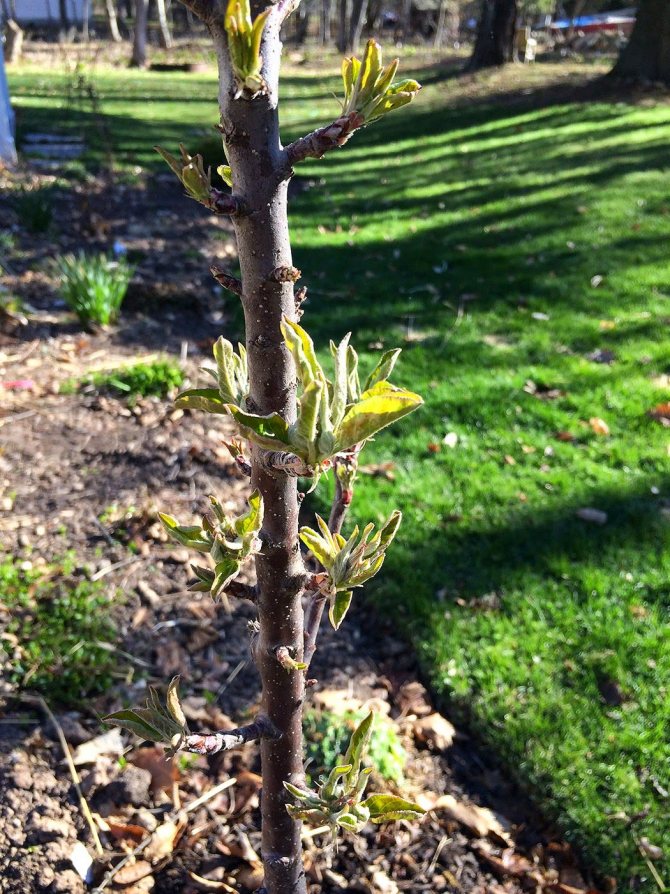

Columnar apple tree. <>
1 way of cropping
Columnar apple trees, due to the lack of a sufficient number of fertile branches, lay the crop on the central trunk. Lateral branches disturb the harmony of the above-ground poplar-like form of the tree and take away some of the nutrients for their development. Therefore, starting from the first spring, the side branches (if any) must be cut into 2 buds. By autumn, they form 2 branches 20-30 cm long. The next spring, the central shoot and the uppermost one are not touched. It will be an extension of the trunk in the future. The lateral shoots are small, underdeveloped, the curves are removed, and the normally developed ones directed upwards are cut off - one by 2 buds, and the second is left for fruiting, shortened to 30-35 cm. After harvesting, this branch is cut off completely next spring. In the third year in spring, the upper shoot (not the central one) is cut off 25 cm from the central trunk. Last year's lateral shoots are thinned out, the fertile ones are removed, and the strong ones are shortened by 2 buds. Some shoots up to 40 cm long are left for fruiting. Limit the growth of the column for 5-6 years. All subsequent years, unnecessary, weak shoots are removed, thinned out, leaving vertical ones, followed by pruning into 2 buds. During the summer, shoots with a very strong growth are pinched, but the final shortening is carried out only in the spring before bud break.
2 way of cropping
The method of forming a candelabra-shaped column is more often used in regions with cold winters, when the central kidney dies. In this case, 1-2 fruit arms are formed from the lateral strong shoots. Formation begins when the shoots reach 20 cm in length. Each is, in fact, a separate column in the future. In height, they practically do not exceed the central trunk. They are formed in the same way as the central trunk, cutting off the lateral shoots into 2 buds. They are obtained instead of one 2-3 independent stems on one trunk (candelabrum).
Reproduction methods
Unfortunately, it will not work to propagate a varietal columnar apple tree with ordinary cuttings. For successful fruiting, the culture must be grafted with a varietal cuttings on a suitable stock. Some people try to grow a seedling from seeds, but this process takes too long, and after its successful completion there is no guarantee that the resulting plant will be exactly a columnar, and not an ordinary apple tree.
Since not everyone can graft a columnar apple tree, and the grafting method is not suitable for it, experts recommend using the method of rooting air layers (Figure 5).
The procedure is carried out as follows:
- In the spring, choose a suitable escape. Its thickness should correspond to the diameter of a regular pencil.
- At the base of the branch, make an annular cut in the bark, and the width of the cut should be about 5 mm.
- Soak a piece of cotton wool in Heteroauxin and wrap the cut for a day.
- After that, the place of the cut is wrapped in wet peat and covered with black plastic wrap.
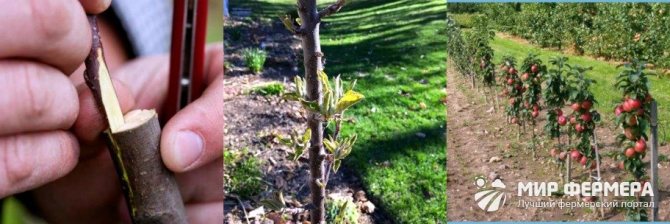

Figure 5. The best breeding method is grafting cuttings
In the future, make sure that the peat is constantly moist, and that air does not penetrate under the film. In the fall, roots will appear at the cut site, the branch can be separated from the tree and transplanted to a permanent place.
Despite the fact that this is a fairly simple method of reproduction, only half of the seedlings take root.
Protection against diseases and pests
Columnar apple trees have a higher immunity from damage by pests and especially diseases. However, in epiphytotic years, a massive invasion of aphids, pests of buds and flower beetles can cause significant damage to the crop. The protective measures are the same as in conventional apple orchards. Details on prevention and protection methods can be found in the article "Spring processing of an orchard from pests"
Some plants protect apple trees from pests well with insecticides. They will decorate the garden and get rid of some pests with marigolds, dill, lemon balm, calendula.
Features of planting culture
Such a question, how to plant columnar apple trees, is relevant for almost all novice summer residents. For this reason, when planning to land, keep the following points in mind:
- purchase only one-year planting material, otherwise the seedling will take root worse;
- if you plan to plant several trees at once, then try to maintain a distance of one meter between each seedling;
- dwarf crops are negatively affected by drafts, shade and the proximity of groundwater.
If you plant columnar apple trees, taking into account all the factors described above, then you will ensure yourself good yields regularly. At the same time, keep in mind that it is also very important for this plant to carry out pruning in a timely manner, and to protect the tree from diseases.
Protecting columnar apple trees in winter
In columnar apple trees, in the cold winter, the pepine bud on the central shoot may suffer. To prevent this from happening, a young tree is covered from above with several layers of spandbond, burlap, and other insulating materials.
From sunburns, the trunk of columnar apple trees is whitened with a thick solution of chalk with the addition of clay, copper sulfate or other preparations. You can whitewash with a special solution of water emulsion for horticultural crops. This is a ready-to-use mixture. No additives required. From winter rodents (mice, hares), the trunk is isolated with a netting, by digging it 2-3 cm into the soil (be careful not to damage the root). In winter, after every snowfall, it is necessary to carefully compact the snow around the trunk (from murine rodents). The root system of columnar apple trees is fragile, so when trampling down the snow, do not put on the whole mass, you can damage the roots.
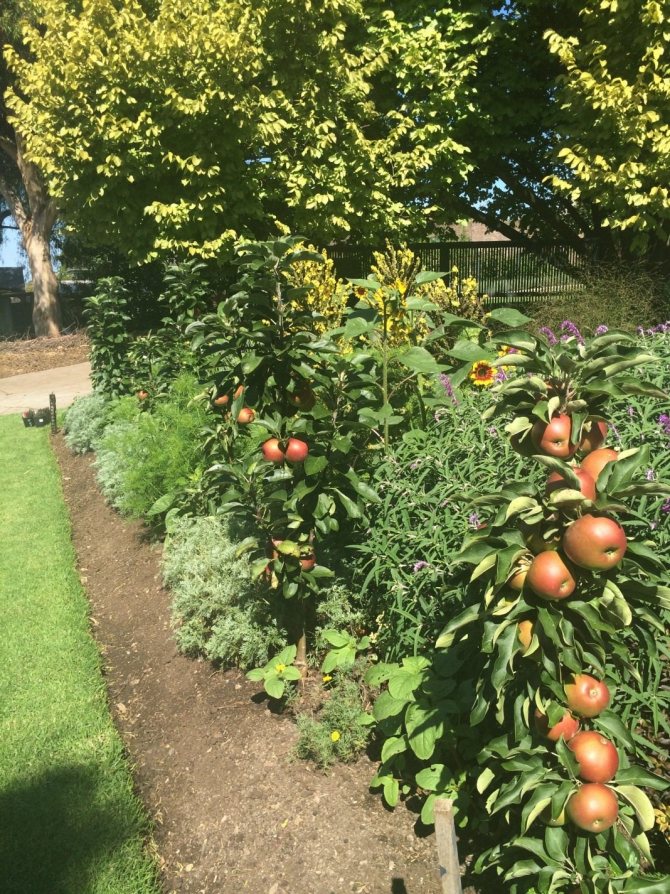

Columnar apple trees. <>
Care rules
After planting is complete, the seedlings are fed, watered, and pruned.
In the spring, the branches are pruned and a composition is applied to prevent disease and pest infestation. This is done before the start of sap flow. Nitrogen fertilizing is also introduced.
In the first year after planting, flower buds are removed from the plants. In the second year of life, about ten buds are left. Over time, more and more flowering shoots are left.
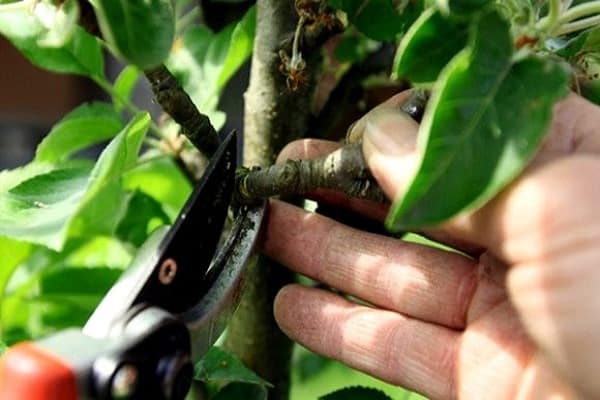

Water the columnar apple trees regularly, as the soil dries out. Loosen the resulting crust. Loosen neatly and shallowly so as not to touch the roots. Sometimes we use tinning the hole around the seedling. The use of such agricultural technology makes it possible to avoid loosening and, thereby, keep the roots intact.
They are fed at the beginning of summer with inorganic fertilizers. The pollinated inflorescences that have appeared are partially removed so that the plant does not overload. When the small apples reach one and a half centimeters in size, only two fruits are left on each inflorescence. Subsequently, the smaller fruit is also removed.
See also
Description and characteristics of the Kastel apple variety, harvesting and storage, varietiesRead
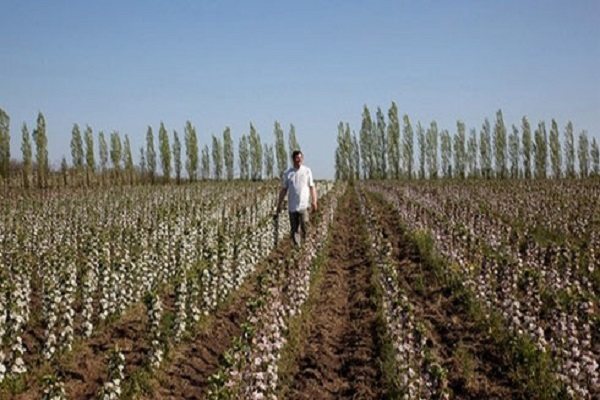

In summer, it is easier to care for columnar apple trees, but prevention of the presence of pests and diseases is required. If symptoms of diseases or traces of parasites are found, urgent measures are taken. Trees are treated with special compounds. Also, for prevention purposes, they are sprayed with chemicals before and after flowering. The last processing is allowed to be carried out no later than one month before the harvest.
At the end of summer, we make top dressing containing potassium salts. From them, young shoots are formed faster, and will not freeze in winter.
In late autumn, sometimes, after harvesting, we feed and process pests and diseases. We cut off excess shoots.
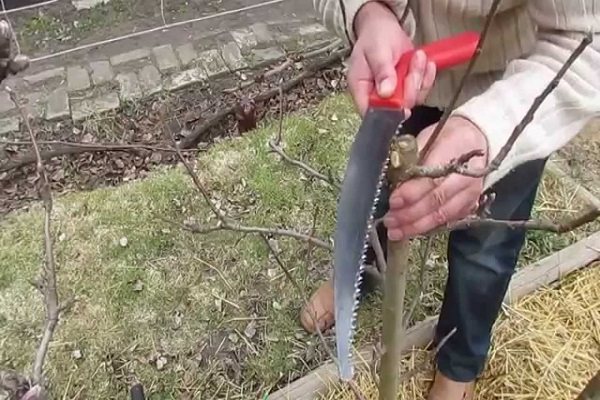

Watering
Regular irrigation makes the fruit juicier. Gardeners make sure that the plants are watered enough throughout the season. For effective distribution of moisture, trees are dug in and form holes so that the water does not spread. One tree takes up to twenty liters. After watering, the surface is mulched. The frequency of watering depends on how regularly it rains, as well as the type of soil in which the seedling is planted. On average, plants are watered twice a month.
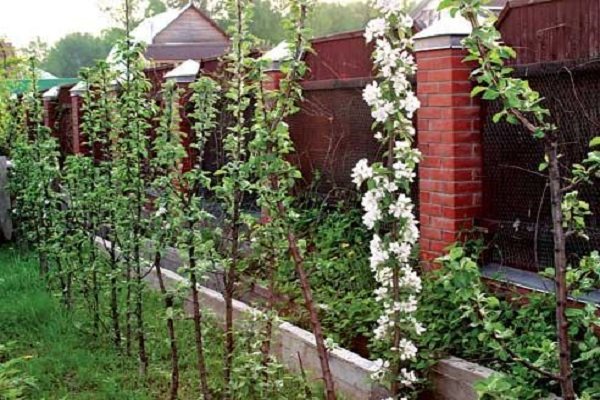

Top dressing of fruit
After budding, gardeners feed the apple trees. Fertilizers are applied in the spring, when sap flow begins. The procedure is repeated two more times, every half month.
Most often used:
- chicken manure;
- cow dung;
- urea solution;
- saltpeter;
- a complex of fertilizers.
The nuances of trimming
It is believed that the columnar varieties do not require pruning, as they do not distill off. But this is not the case. Sometimes, under unfavorable conditions of development, lateral shoots grow, which spoil the crown. Cut them off or not - everyone decides for himself.
The most favorable periods for pruning are spring, early summer and autumn. Pruning is carried out for several years.
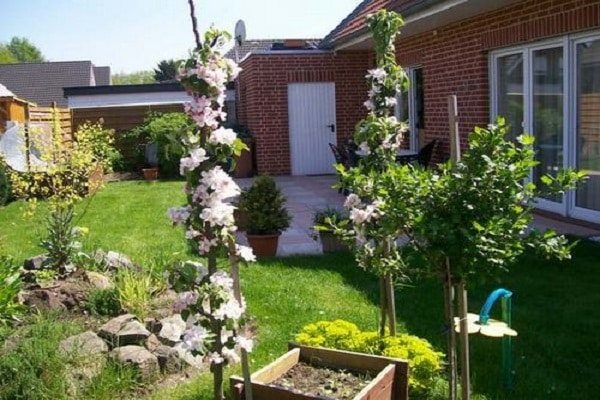

Each year requires:
- First year. We cut off all the processes from the side, making the main stem shorter.
- Second year. We prune new shoots, leaving no more than thirty centimeters.
- Third year. The top is shortened to twenty-five centimeters, leaving forty centimeters on the side.
- Fourth year. We remove the extra and bad processes of the last year.
- Fifth year. The trunk is trimmed so that the total length of the tree is no more than three meters.
- In the future, unnecessary shoots are removed.
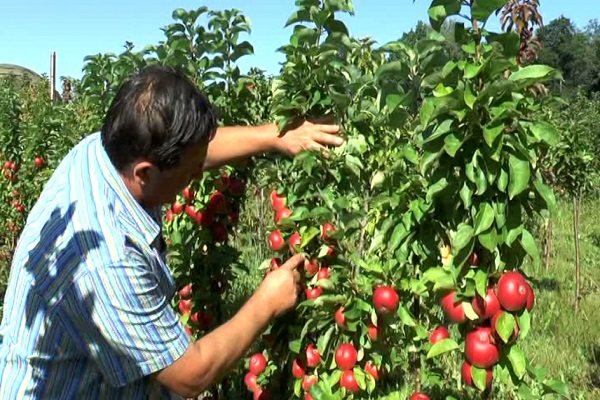

Tinning of columnar plants
The rhizome of columnar apple trees is designed in such a way that it is very afraid of overdrying the soil. Therefore, constant hydration is required. For this, mulch or peat crumbs are added. But the easiest way is to tin the surface around the trunk.
Sowing with lawn grasses or other types of low-growing vegetation creates protection from the sun, the roots are sufficiently moist. In this case, the grass does not inhibit the growth of the tree. The grass cover is mowed periodically.
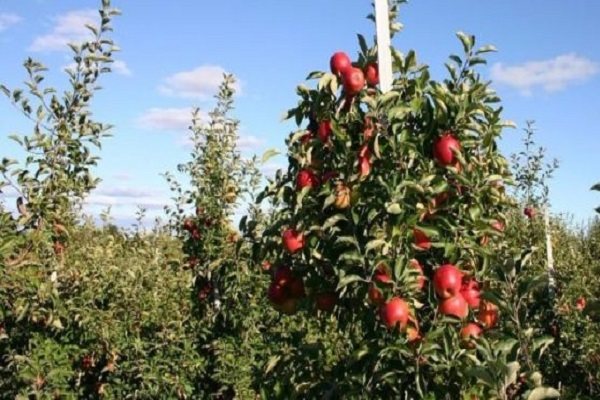

Protection against diseases and pests
There are many diseases and parasites that can harm columnar apple trees. These are insects, fungi, mold, microbes and viruses. Periodically, the crown and bark of plants are treated with special pest control compounds. Otherwise, it will be difficult to get a good harvest.
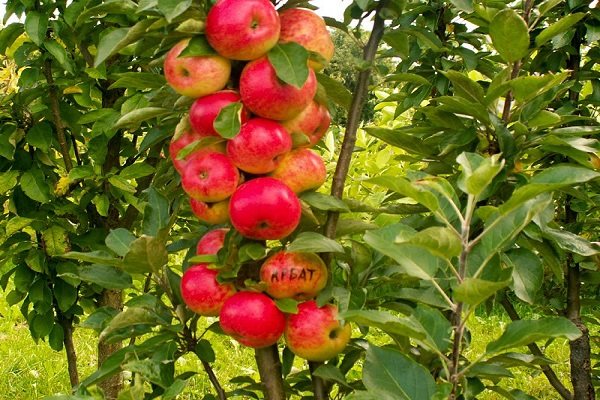

Protecting columnar apple trees in winter
Columnar apple trees need protection during the frosty period. We remove the mulch from the straw so that rodents do not start. The trunk is covered, snow is best. It is important to prevent freezing of the trunk and kidneys, which occurs when wet and freezing.
We wrap the growth point especially carefully in order to prevent it from freezing. We prepare the pole to which the tree is tied so that it does not break from the wind.
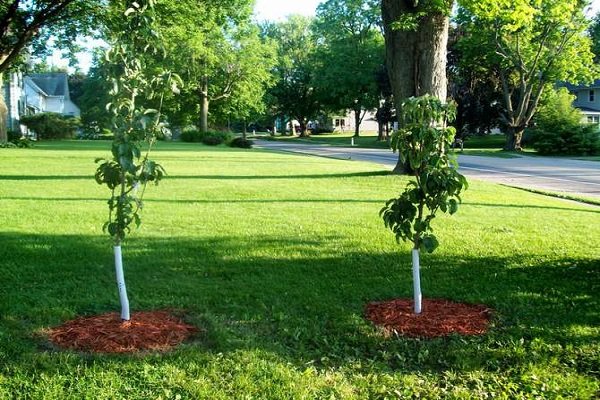

Harvest
Harvesting is straightforward, since the height of the columnar apple trees does not require special devices. Harvesting begins according to the grade. The harvested crop immediately after the bulkhead is placed in a storage facility (basement, cellar) in separate small containers, boxes and other containers. For winter storage, the optimum temperature is +2 .. + 3 ° C. Varieties with a short shelf life are used for processing (juices, compotes, jams, etc.).
- Part 1. Columnar apple trees - features and the best varieties
- Part 2. Features of growing columnar apple trees

